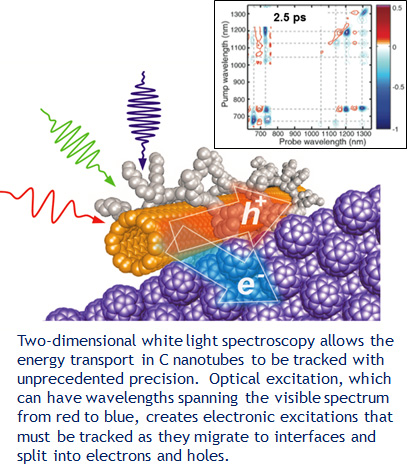 Novel Multidimensional Visible Light Spectroscopy Tracks Optical Excitations
Novel Multidimensional Visible Light Spectroscopy Tracks Optical Excitations
General Overview: Carbon nanotubes promise the basis of exciting new classes of electronic and photonic materials with unprecedented performance, for example, in solar cells and in transistors of electronic devices. Whereas the properties of single nanotubes are well understood, to make devices and technologies, it is necessary to understand the behaviors of assemblies or bundles of these materials. Recently, University of Wisconsin-Madison researchers have pioneered a novel experimental method that has provided important insight into the way in which packets of energy (“excitons”) are transported through carbon nanotube composites. By flashing light of different wavelengths onto the materials, the researchers were able to watch the “flow” of energy through the system as it evolves in time. This improved understanding is enabling new designs of versatile electronic and optical devices.